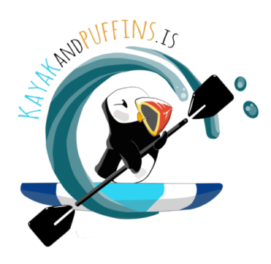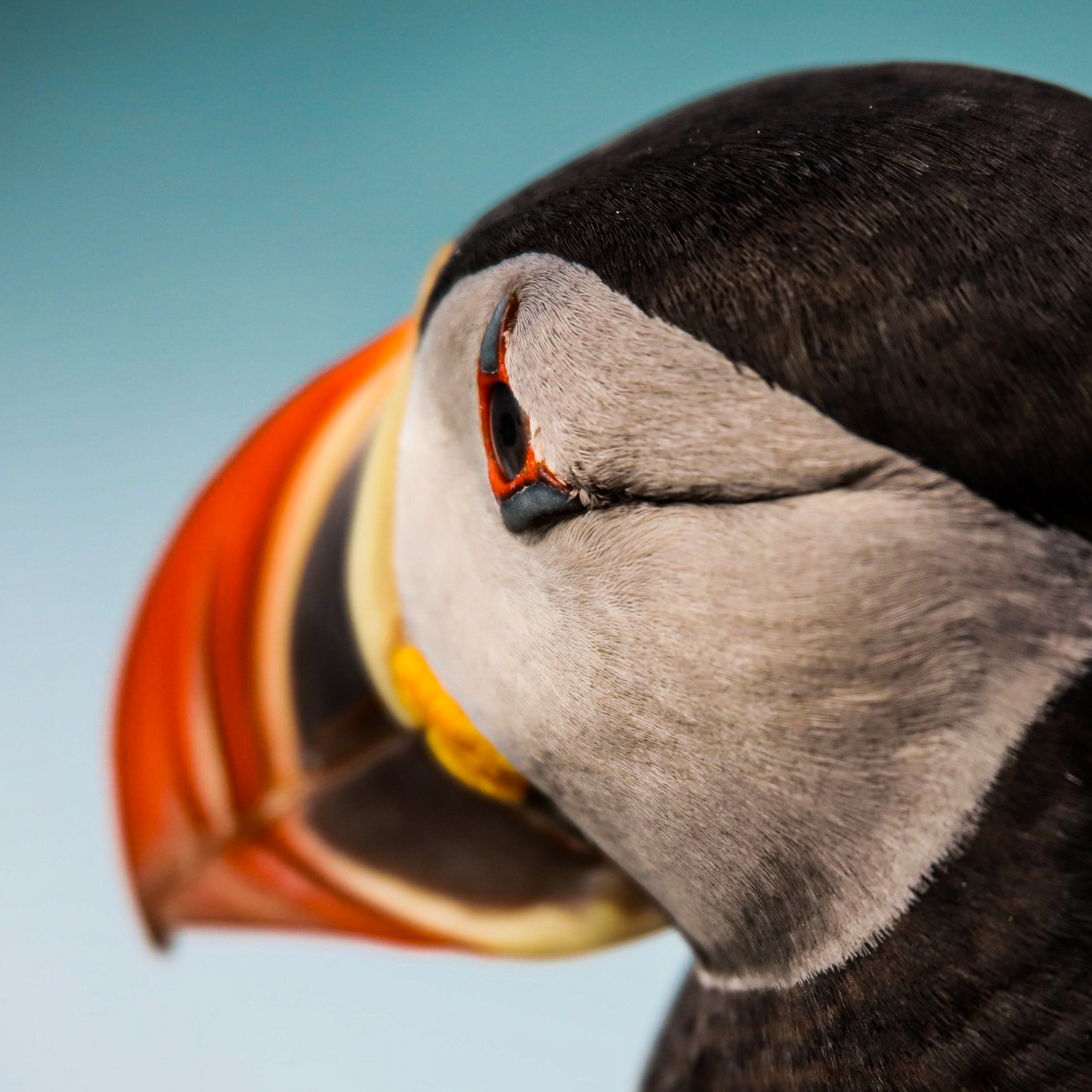The Atlantic Puffin (Fratercula arctica) is a species of seabird in the auk family (Alcidea). It is one of the smaller auks, and also the most common. The puffin is a rather small bird, approximately 26-29 cm in length with a wingspan of 47-64 cm, and weighing 450-500g. The adult puffin is black on top and white on bottom with a black cap, black collar, and orange legs. What really makes the puffin special, however, is its colourful, flat-sided beak.
The puffin’s main food is sandeel and capelin, as well as fry and krill. Puffins are good divers and can go down to depths of 60 meters, spending about one and a half minutes underwater.
Puffins can be found in the North Atlantic, most often around the coast of Iceland, and approximately sixty percent of the population breeds here. The puffin also breeds in Greenland, Newfoundland, Norway, along the coast of Maine in the U.S., in Ireland, and in the United Kingdom. It is estimated that the total population of the puffin is approximately 14 million with the largest colony found in the Westman Islands of Iceland.
The incubation time for puffin eggs is around 42 days and the parents usually leave the baby puffin when it is about 40 days old. The baby puffin is called a puffling, or pysja in Icelandic. Pufflings usually leave the nest in the middle of August and head for the sea to look for food. In the Westman Islands, pufflings sometimes get lost because of the distraction of lights from the houses and streets and wander into town. It’s a tradition, therefore, for the children in the Westman islands to save these lost pufflings by gathering them up and releasing them to the ocean.
Puffins spend most of their time out at sea but once the breeding season begins in April and May, they will begin nesting on grassy islands, headlands and slopes above clifftops, or in screes below cliffs. Egg laying usually begins in June in Iceland, but it can vary among locations. The female lays a single white egg each year, but if it is early in the breeding season, she might lay another egg. Like most birds, the puffin does not actually lay on the eggs, but keeps them warm under its wings. Both parents share the incubation responsibilities.
The best time to spot puffins is the end of April until early September from 7:00-10:00 in the morning and 18:00-22:00 in the evening.







